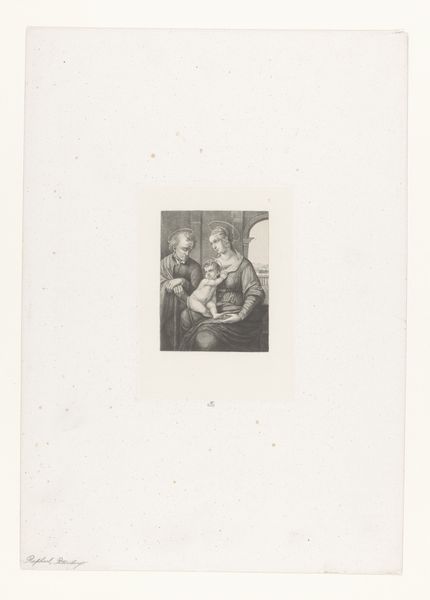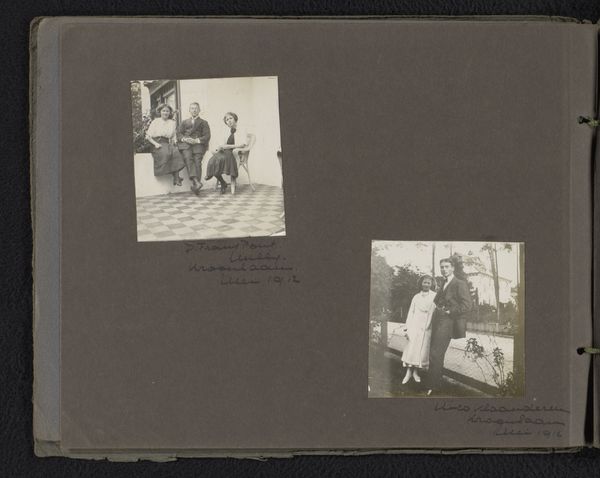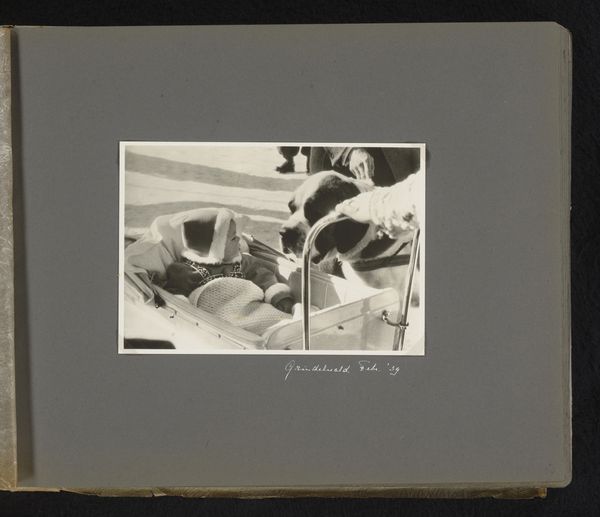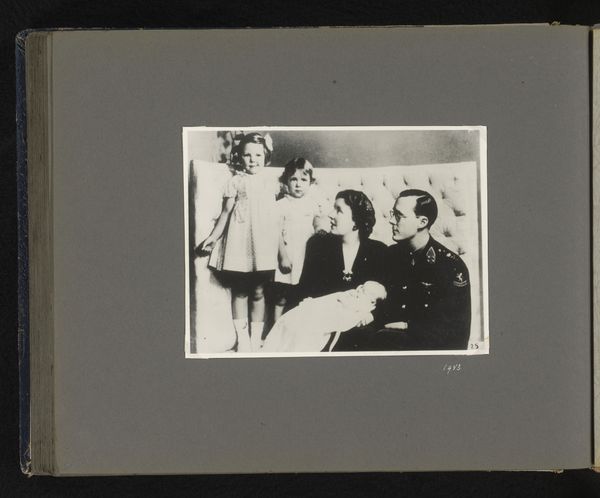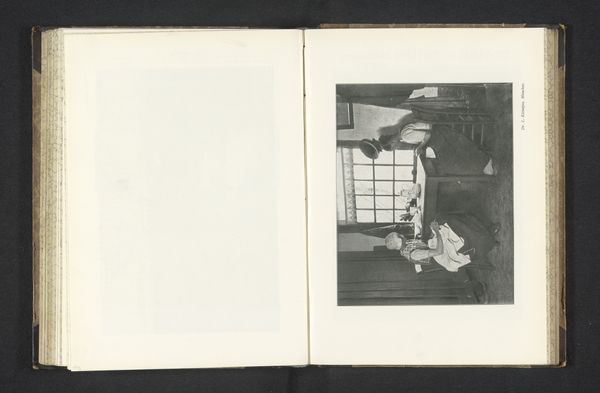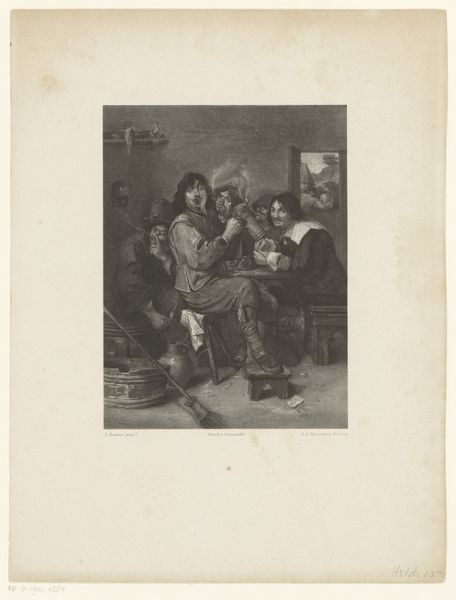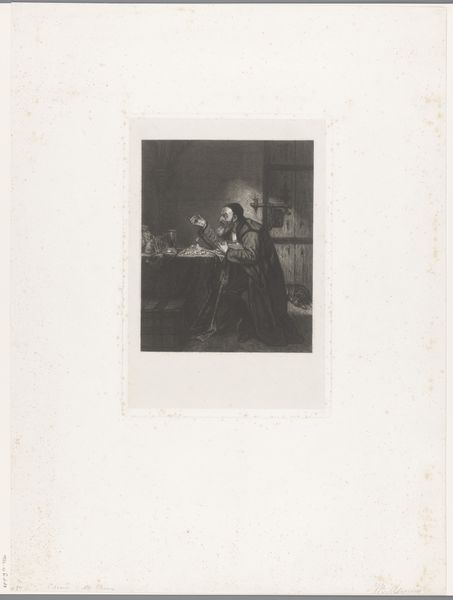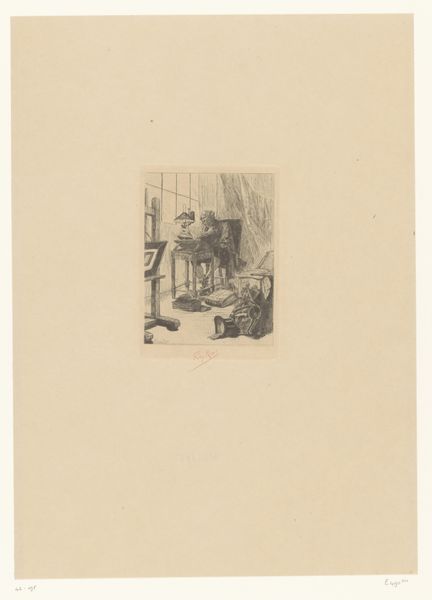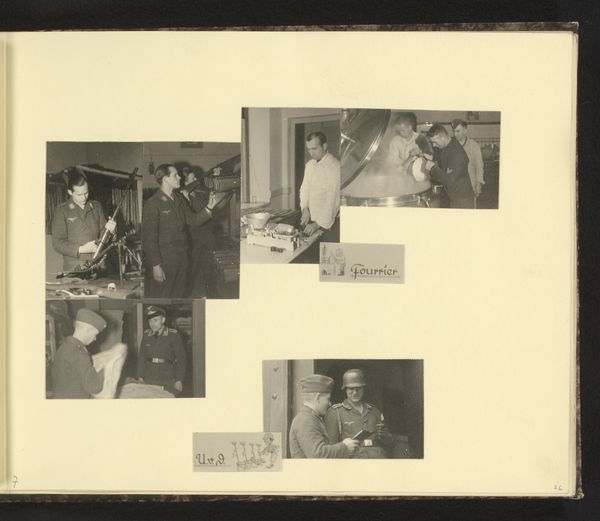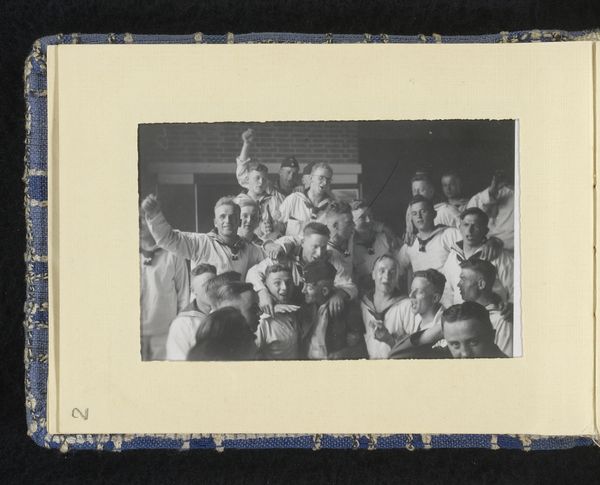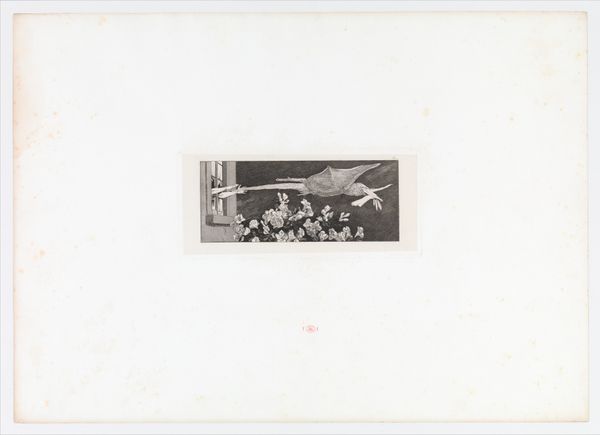
drawing, print, etching
#
drawing
# print
#
etching
#
group-portraits
#
watercolour illustration
#
genre-painting
#
monochrome
Dimensions: height 241 mm, width 268 mm
Copyright: Rijks Museum: Open Domain
Curator: Harrie Kuyten's etching, "Three Musicians," likely made between 1893 and 1921, captures a trio in monochrome tones. What’s your first take? Editor: Stark. The etching is dominated by blacks and greys, giving it a solemn yet concentrated feel. It draws the eye to the instruments, the lines are confident. Curator: Interesting. The composition definitely centers on the subjects as musicians performing in formal dress, revealing specific markers of class and cultural capital in late 19th- and early 20th-century Europe. Think about who had access to formal musical training and performance spaces at that time. Editor: Yes, but consider how the arrangement leads the eye—the cellist in the foreground is partially cropped, which moves you back to the other two figures with their instruments. The composition seems quite intentional, no? Curator: Undoubtedly deliberate, I'd add that we could analyze what types of audiences would engage with depictions of high art, and how this image situates within debates about access, privilege, and cultural elitism that shaped modernity. We might consider the implications and political position of images such as this that highlight the consumption habits of the bourgeoisie. Editor: True, but observe also how Kuyten varies his mark-making. The details on the instruments differ in texture from the softer shading on the faces and clothing, a nuanced study in tonal relationships and etching techniques. He captures the essence of concentration and rhythm with precision. Curator: Precisely, there’s a tension at play in Kuyten’s work, as it simultaneously conveys elitist sentiments through his choice of subject, it also hints at the complex relationship between musicians and society during this tumultuous period. It reveals, yet it hides, an almost ubiquitous paradox present within art and culture itself. Editor: Yes, the dialogue he crafts between precision and emotion lingers. Thanks for highlighting the complex narratives woven into this monochromatic scene. Curator: My pleasure. Considering the various cultural contexts we discussed allows for the viewer to analyze their relationship to art consumption and creation in the past, while inviting introspection within the present.
Comments
No comments
Be the first to comment and join the conversation on the ultimate creative platform.
